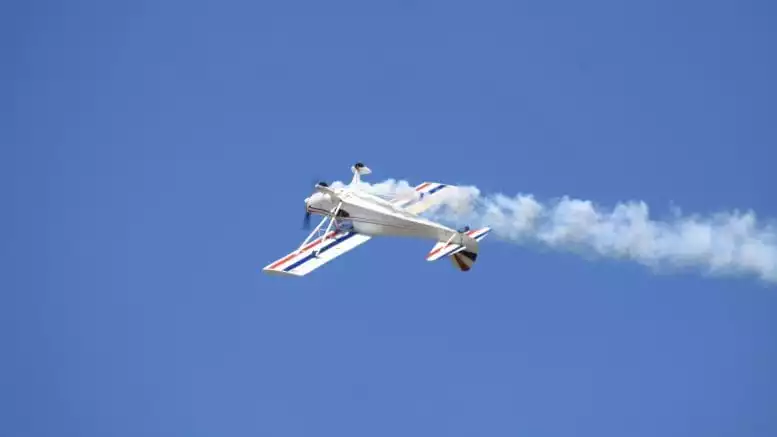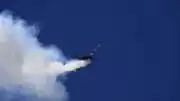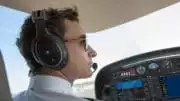Does Airplane Design Affect The Ability To Perform Tricks?
What makes an airplane aerobatic? How does airplane design affect its aerobatic ability to perform tricks?
Every airplane can fly upside down, at least briefly. The Wright Brothers were performing feats not long after their initial flight in 1903, and the word aerobatics was is use as early as 1914. The introduction of jets and thrust vectors made even more tricks possible, but these designs and maneuvers were largely in service of aerial dogfighting. It wasn’t until relatively recently that airplanes constructed specifically for aerobatics began to appear.
No matter what an airplane is initially designed for, airplane design, and its inherent qualities contribute to the tricks it is able to perform. Even the most precisely designed airplane is still subject to the four forces of flight and the limitations or experience of its pilot, but the way it is constructed can emphasize certain characteristics of aeronautics which make various tricks easier to perform.
Top of the Tank: Fuel and Oil
It’s easy to assume that the most obvious alteration to aircraft for aerobatics might be to its wings, tail, or elevator. However, the biggest obstacle to sustained inverted or unusually angled flight is within the guts of the airplane, not its airframe.
Flying inverted is an especially difficult escape from the usual forces of gravity. Not only is the pilot seeing the world upside down, in a non-aerobatic aircraft, the airplane’s fuel shifts to the top of the tank. The engine cannot draw down fuel, and its mechanisms will quickly sputter out. The challenge is the same with other liquids in the airplane.
How Aerobatic Airplane Design Manages Fuel and Oil
Engineers meet this challenge in several ways. Aerobatic airplane design uses fuel injectors instead of carburetors, which operate with greater efficiency and ensure an even flow of fuel and oxygen to the engine components. Fuel tanks of aerobatic airplanes are also equipped with what is known as a “flop tube”. This is a weighed hose which “follows the fuel” when the airplane is inverted. This avoids the cutoff of fuel from the tank to the fuel injectors. In addition, “header tanks” are located beneath the engine—as long as the airplane is on the ground. Upon inversion, the suddenly “right side up” tank steps in to feed the fuel.
Oil, another vital liquid to an airplane engine, is also a concern to aerobatic pilots. The engine will seize without it. Most oil systems on aerobatic airplanes use solutions similar to those addressing fuel. Specially designed valves with steel weights switch the point of pickup for oil.
What About Wing Shape?
Airfoils are aerodynamically shaped plates which are rounded so that air can pass efficiently above and below them. The cross-section view of an airplane’s wing is its airfoil. Airfoils encourage lift. The “flatter” the airfoil, the more the airplane is built for speed. Therefore, stable, easy-to-fly trainers tend to possess fat airfoils, while a fighter jets’ are more streamlined. The general shape of the many of airplane wings, then, tend to be curved at least a little on the top and much flatter down below. This makes for greater lift in normal cruise flight.
What about aerobatic airplane design? They have to spend at least some time right side up, don’t they? Aerobatic airplanes make use of what is known as symmetrical wings. These wings are curved equally both above and below the center line of the wing. That means they have the same performance and stability whether the cockpit is pointed towards the Earth or away from it. The airfoil is placed in at least a small positive angle in order to create enough lift to leave the runway.
Acrobatic Ailerons
Ailerons are part of the airplane’s flight control surfaces. They are attached to the back edges of both wings with hinges. When the pilot needs to roll the airplane (move it from side to side in flight by tipping the wings), he or she relies on the ailerons to bank. The concept of ailerons has existed since at least the 1860s, with the Wright Brothers quickly adapting them for use on their airplanes. Because of this, they rapidly made their way into use for aerobatics.
For aerobatic airplane design, mechanisms known as “spades” are mounted to the ailerons. Counterbalance is key in the precision flying required for aerobatics. Spades help to provide them, and are often described within the aerobatic community as “power steering”. The spades are usually shaped like the head of a shovel. Unlike the aileron itself, the spades are fixed and do not move. Spades enable the airplane to roll easier than it would without them. They are needed because they balance the high speed required for many acrobatic tricks; they help to control the airflow speeding over the wing.
Some ailerons for acrobatic airplanes are specifically designed so that spades are not necessary. While the spade (or spade-inclusive aileron) doesn’t necessarily encourage the airplane to roll faster, it decreases the workload on the pilot as he or she moves the stick.
Stage-Ready Propellers
Most people are familiar with the Navy’s Blue Angels and the Air Force’s Thunderbirds as aerobatic teams. Their jet engines and thrust vectors permit them to perform feats that propeller-driven airplanes can’t. When an aerobatic airplane is a “prop,” the shape of the blades plays a role in how it moves in the air.
Aerobatic airplane design usually has propellers which turn at constant speeds. If aileron spade provides “power steering,” a constant-speed propeller is an “automatic transmission”. The pitch of the propeller’s blade is adjusted without the pilot constantly checking the RPM’s to avoid overspeeding. When running the engine at high RPM’s, the pitch of the blade is low, which makes the propeller to spin faster than necessary. Automatic control of the blades encourages them to increase the amount of air which enters the engine, which slows down the spin.
“Underspeeding” is in danger of occurring when the airplane is upside down or performing a loop. On prop-driven aerobatic airplane design, each point of attachment on the blade is weighted. This measure helps to counteract the effects of the brief microgravity the airplane experiences when swooping through these maneuvers.
Ready to Soar with Us?







